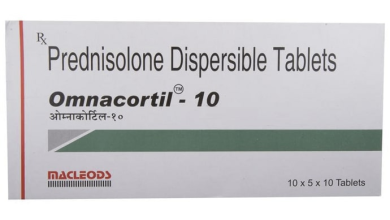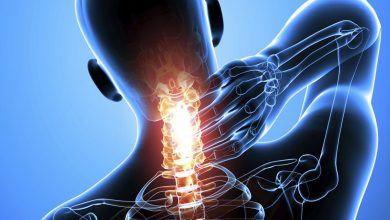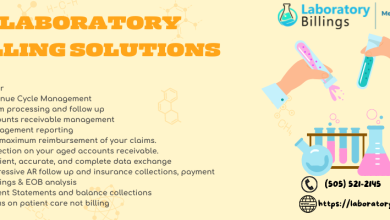A FRUSTRATING DILEMMA: PRURIGO NODULARIS

Prurigo nodularis is a dermatological disorder about which little information is available. People with Prurigo nodularis are often those who are middle-aged or elderly. Patients with prurigo nodularis almost always have a long history of intense, continuous itching. Many pharmaceuticals and clinical research organizations in the USA and all over the world are coming up with ways to help people with the condition and make their lives easier.
Let’s take a quick look at what prurigo nodularis is all about.
What is Prurigo Nodularis?
Prurigo nodularis (PN) is a skin disorder characterized by firm, itchy nodules. The skin alterations are thought to be caused by repeated scratching. Skin-colored, brown, or red lesions with scale, crust, erosion, and ulceration are common. They can appear anywhere on the skin, specifically the arms and legs, as well as the accessible portions of the shoulders and upper back, which are commonly affected by prurigo nodularis lesions. The middle back is usually spared because it can’t be scratched.
Prurigo Nodularis Causes
Although many patients with Prurigo nodularis have underlying atopic dermatitis, there is rarely an identified underlying cause (eczema). The itch is assumed to start first in most cases, and the scratching that follows causes the lesions.
Some causes that trigger itchy skin are dry skin, a thyroid condition or any chronic kidney condition, diabetes, and liver disease. The degree of PN itching can be excruciating. It is considered to have the most intense itch of any irritable skin condition. Many prurigo nodularis treatments for its symptoms can help improve the quality of life for those suffering from this skin condition.
What Does it Look like?
A prurigo nodularis nodule is stiff to the touch. It commonly appears as a huge dome-shaped wart-like growth with a width of up to 3 cm. Delicate, red, itchy papules or spherical skin bumps are the first signs of lesions.
What are Prurigo Nodularis’s Signs and Symptoms?
If you have prurigo nodularis, you may encounter the following symptoms:
1. Irritated skin
The skin itches a lot before the prurigo nodularis itching bumps form. This itch can continue for a long time or emerge in sudden bursts. It’s usually intense in any instance. Some people have a few itchy spots on their bodies. Others have itchy skin that encompasses the entire portion of their body.
2. Burning of the Skin
Some people claim that their skin burns or stings instead of itching. While other patients reported sensations like bugs were crawling on their skin
3. Itchy pimples (nodules) appear on the skin
Itchy bumps develop as a result of frequent scratching, plucking, or rubbing. After your skin begins to itch, burn, or sting, the itchy pimples usually appear six weeks later. Often, pimples appear on both sides of the body at the same time. The bumps might be any color, including your skin’s natural hue, pink, red, or brownish-black. Their size may also vary.
4. Skin discoloration
Itching can cause patches and pimples to bleed or become too painful to touch if left unattended. All of this scratching has the potential to cause skin damage, such as black stains.
Apart from that, Prurigo Nodularis can substantially impact one’s quality of life, such as difficulty sleeping, avoiding social interactions, and feeling unsatisfied.
Treatment for Prurigo nodularis
A Prurigo Nodularis treatment aims to relieve itching and disrupt the itch-scratch cycle.
Prurigo nodularis Clinical Trials near you are conducted by several research institutes and pharmaceutical companies in the United States. This is where your healthcare professional will address any underlying issue that is bothering you.
For itch alleviation, the typical Prurigo Nodularis treatment includes local creams as well as systemic medications. Use topical steroid creams or ointments or get local corticosteroid injections into the pimples to relieve inflammation. Another treatment option is light therapy, which involves using a specific medical-grade light machine in the doctor’s office. Immunosuppressants (medications that suppress the immune system) are frequently recommended for patients with severe PN to reduce inflammation.
Every case is unique and there are numerous medications available, but adequately controlling your Prurigo Nodularis may take some time. You must figure out which solutions are ideal for you.
The good news is that several novel drugs and therapies are currently being developed and evaluated. Join dermatological clinical trials near you to learn more about focused and successful treatment options for skin disorders.
Lifestyle Modifications for an Itch-Free Tomorrow
Everyone’s skin is different, so finding a routine that soothes your itching may take some time. To avoid additional nodules and allow the old ones to heal, it’s critical to try to disrupt the itch-scratch cycle. Some measures can be taken to keep Prurigo nodularis under control.
Stop itching and rubbing. Even if the itching is excruciating, refraining from rubbing or scratching is critical to treating your disease and preventing a recurrence. Apply cool, moist compresses to the affected area. These may help alleviate itching and soothe the skin. Before applying a medicated cream, apply a cool, damp compress to the affected skin for a few minutes to help the cream absorb into the skin.
Over-the-counter drugs are a good place to start. Use an anti-itch cream or lotion in the affected areas.
Cover the damaged area with a cloth. Bandages or dressings can preserve and keep the skin from being scratched. These can come in handy if you scratch while sleeping.
Bathe in short, warm showers, and moisturize your skin afterward. Warm, not hot, water should be used to prepare your bath. Mix in the colloidal oatmeal. Use soaps that are free of colors and scents. Bathing time and frequency should be limited.
After you’ve washed your face, pat it dry and apply an unscented moisturizer.
Stay away from potential triggers. Take note of what appears to trigger a recurrence and prevent it.
Epidemiology
The exact number of people who suffer from PN is unknown. Although many cases in other age groups have been documented, the bulk of patients with PN is present between the ages of 51 and 65.
While both men and women are affected by the condition, it appears to be more common and severe in women. Individuals of African American ethnicity are 3.4 times more likely than white patients to suffer from prurigo nodularis, suggesting that ethnicity and genetic predisposition play a role. Internal cancer, renal failure, and psychological disorders have all been linked to the onset of prurigo nodularis.
Prognosis and Complications
Prurigo nodularis is a relatively innocuous disorder with a good prognosis. It is a chronic condition that is usually preceded by a source of pruritus. On the other hand, Prurigo nodularis is a distinct entity from the underlying causes and can persist even after the underlying disease has been treated.
Because prurigo nodularis lesions are scratched, secondary infections can occur. It is critical to watch for signs of infection such as erythema, discomfort, warmth, and fever. If a secondary infection is discovered, it is critical to begin topical or systemic antibiotic treatment as soon as possible to protect the skin’s flora.
Outlook
Prurigo nodularis is not communicable in and of itself. The origin is unknown; however, various factors can cause PN, such as nerve and behavioral disorders, liver and renal dysfunction, and certain skin diseases such as dermatitis. Prurigo nodularis treatment necessitates the collaboration of a multidisciplinary team that must treat and educate the patients on how to reduce lesion scratching, as well as the assurance and diagnosis of underlying causes of pruritus, as well as the diagnosis and treatment of any psychological disorder associated with scratching and picking at skin.
Also Read : How to End Your Back Pain Forever Life is challenging




